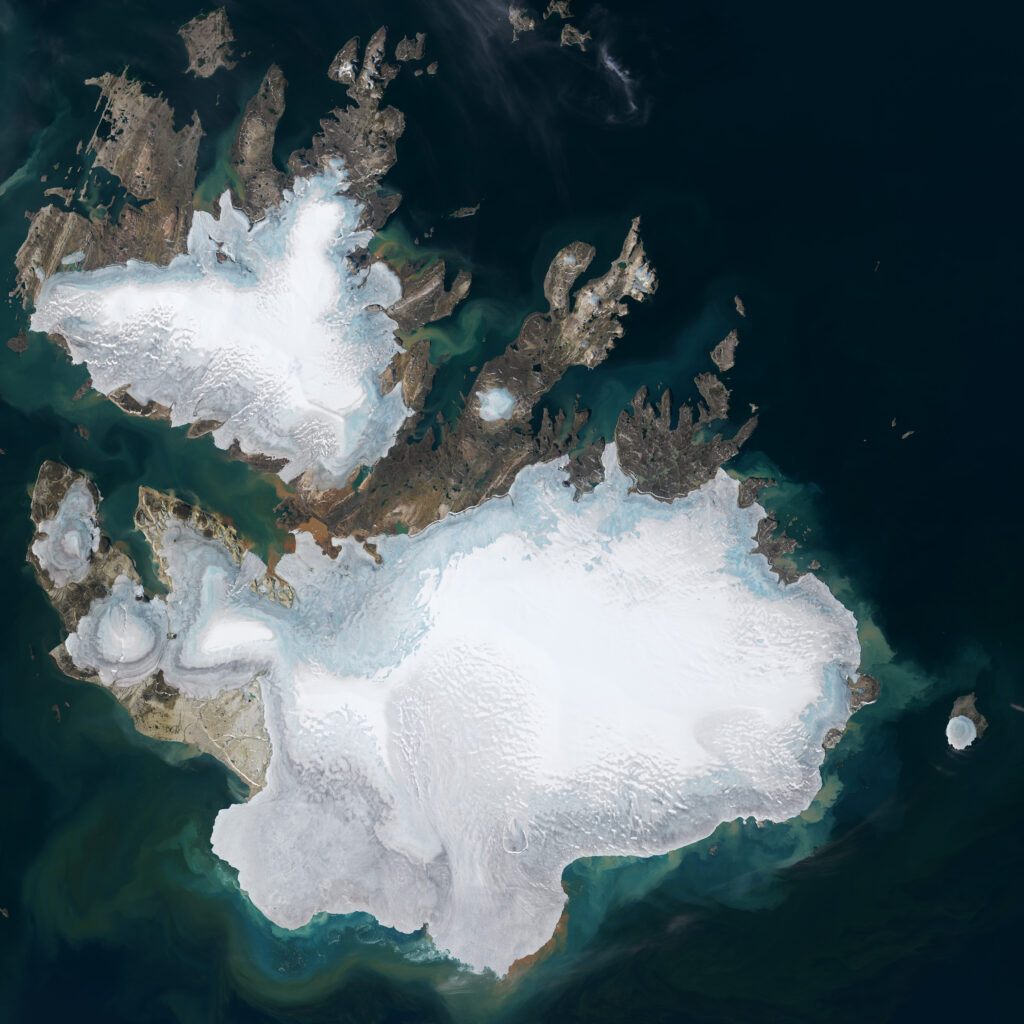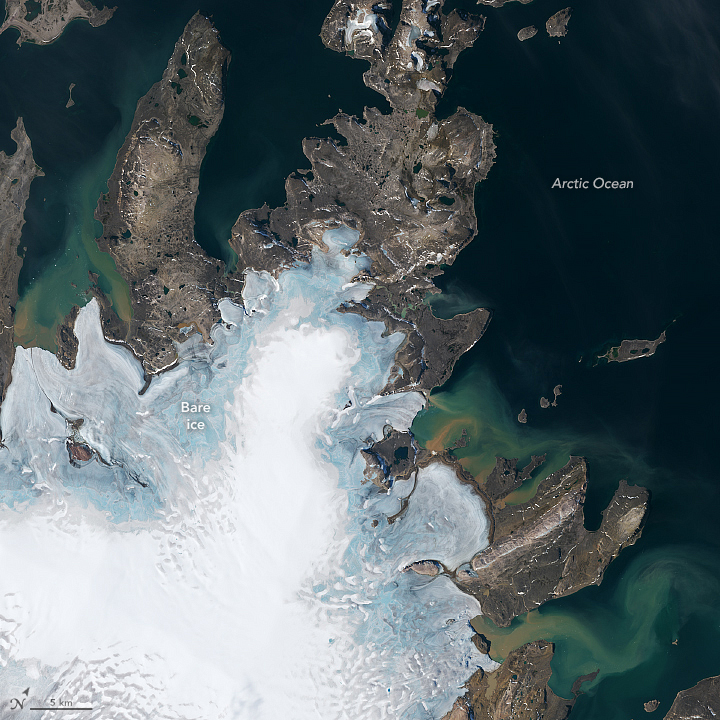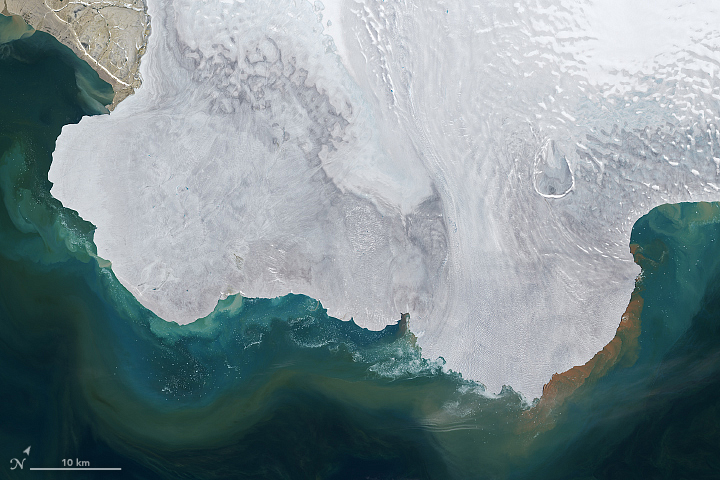NASA has published images taken by the Landsat 8 satellite. They show the process of melting of Svalbard’s glaciers.

The Svalbard archipelago is located in the Arctic Ocean between Norway and the North Pole. It consists of three large islands as well as a number of smaller islands. More than half of the archipelago’s territory is permanently covered with ice. It accounts for about 6% of the planet’s glaciated area outside of Greenland and Antarctica.
Svalbard is currently one of the fastest warming places on Earth. In late July and early August 2024, temperatures in this part of the Arctic Circle were 4 °C above average. The abnormal heat could not but affect Svalbard, leading to rapid melting of snow and ice.

Images taken on August 9 by Landsat 8 satellite show North-Eastern Earth, the second largest island in the archipelago. The photo shows the characteristic colored swirls around the island. These are sedimentary rocks that are brought into the ocean by melting glaciers. The melting of seasonal snow and an older, compacted layer of snow (called firn) has left some areas of glacial ice completely exposed. They are indicated in light blue color in the photo.
According to Xavier Fettweis, a climatologist at the University of Liege, the Svalbard ice caps broke their record for daily surface melting on July 23, 2024. On that day, each square meter of the archipelago lost about 55 millimeters of water, which is five times the norm.

Exceptional melting continued in August. According to meteorologist Daan van den Broek, temperatures reached 20.2 °C in Longyear, the capital of Svalbard, on August 11, which was the highest August temperature ever recorded and about 2.2 °C above the previous monthly record.
According to the Copernicus State of the Climate report, Svalbard experienced its warmest summer on record in 2023. The report cites several factors that have contributed to the warming, including a decrease in sea ice and an increase in sea surface temperatures.
Earlier we told you that July 2024 was the hottest July on record.
According to Earthobservatory


